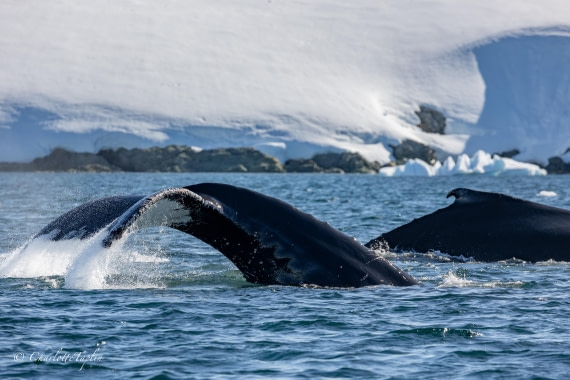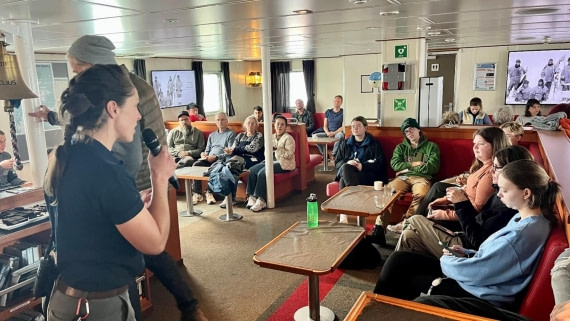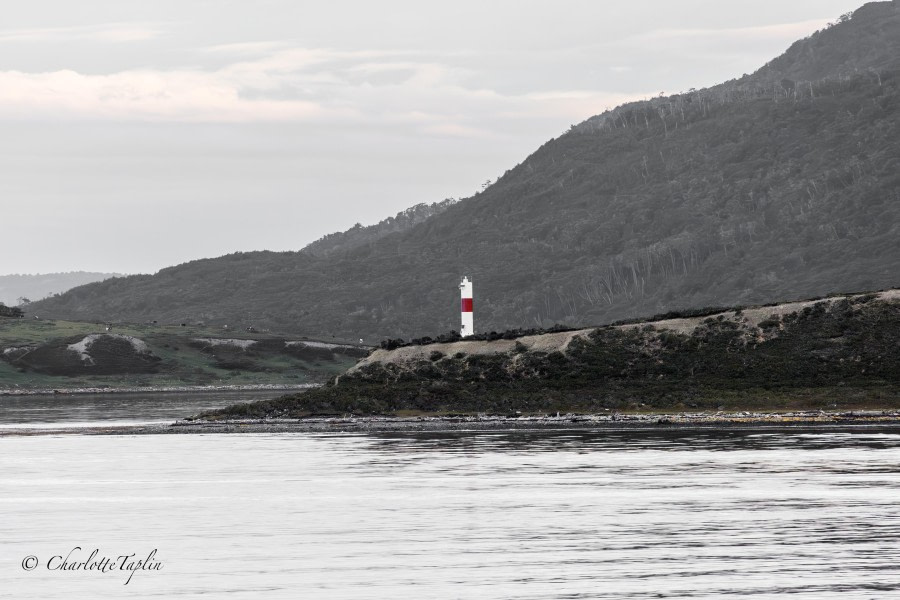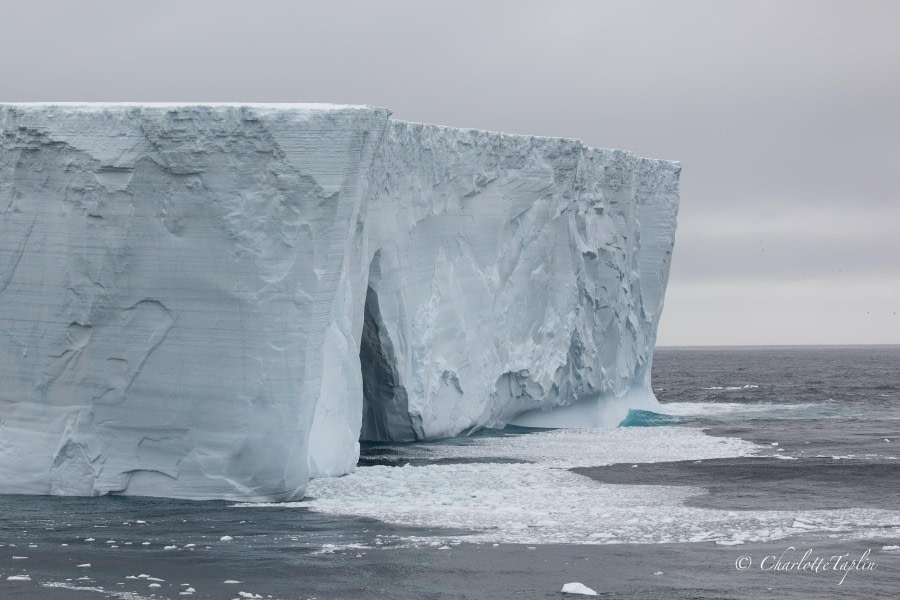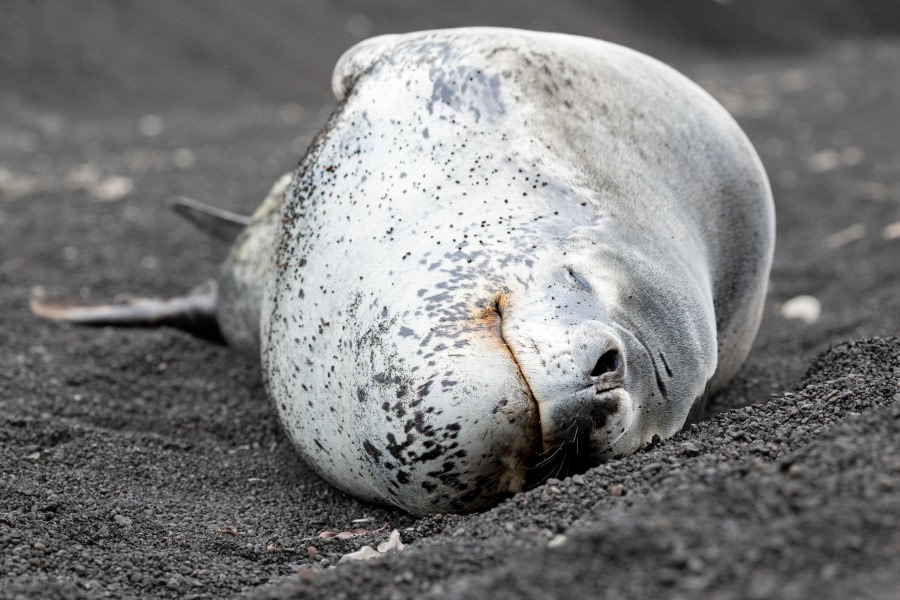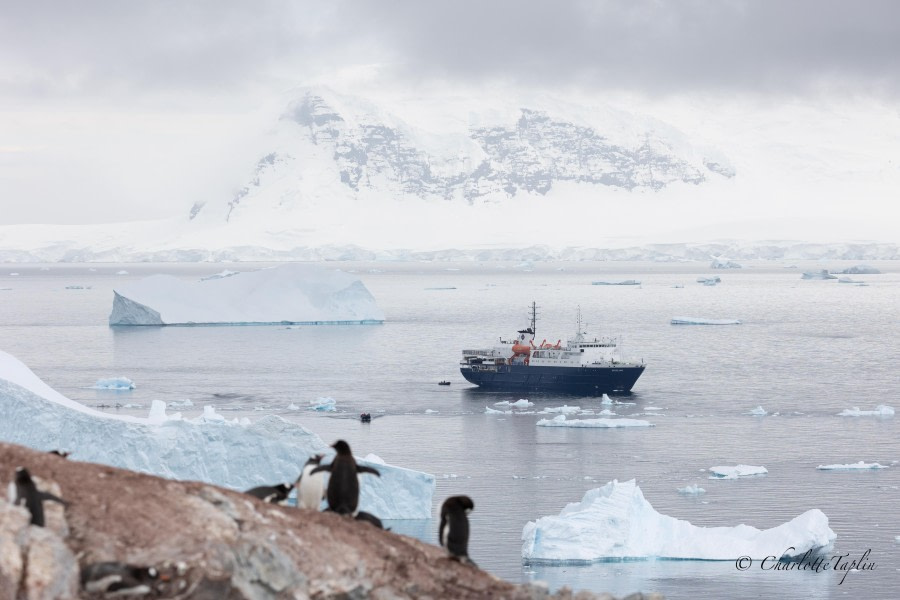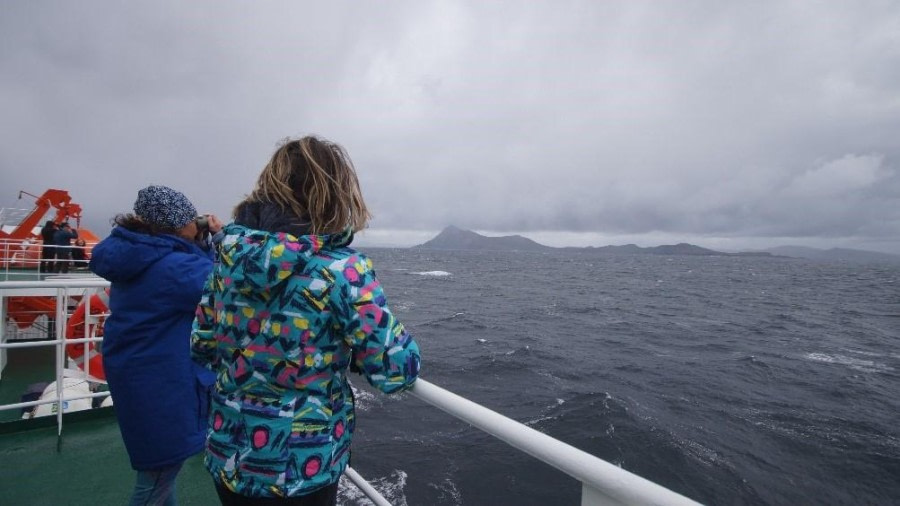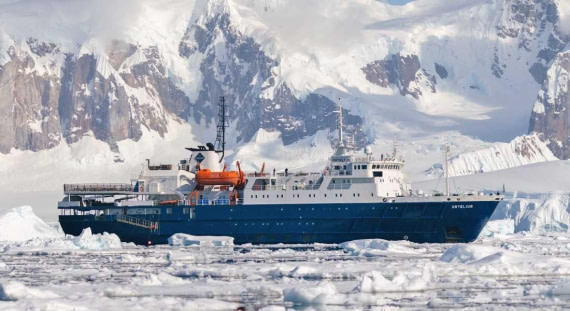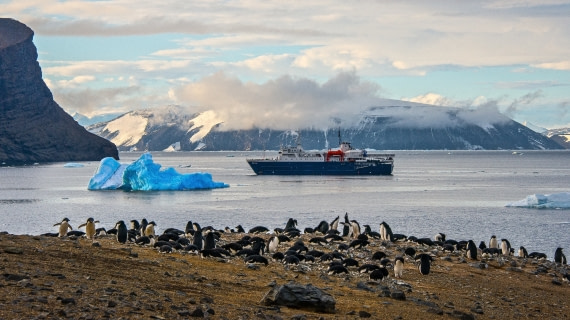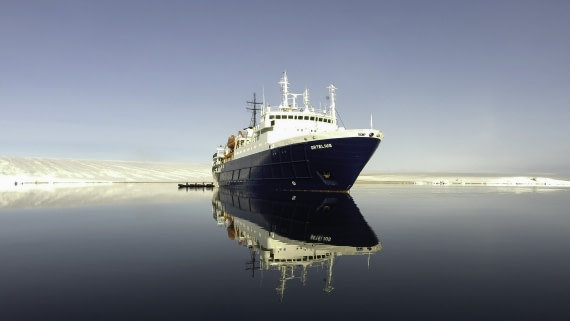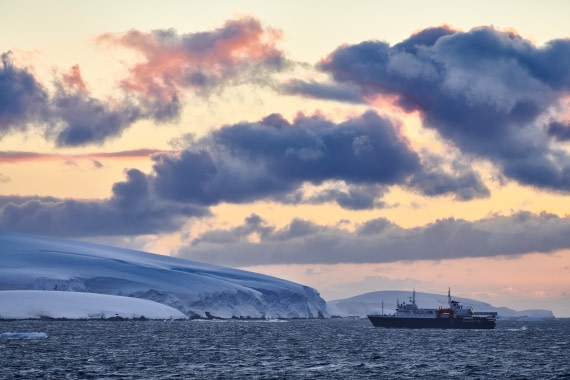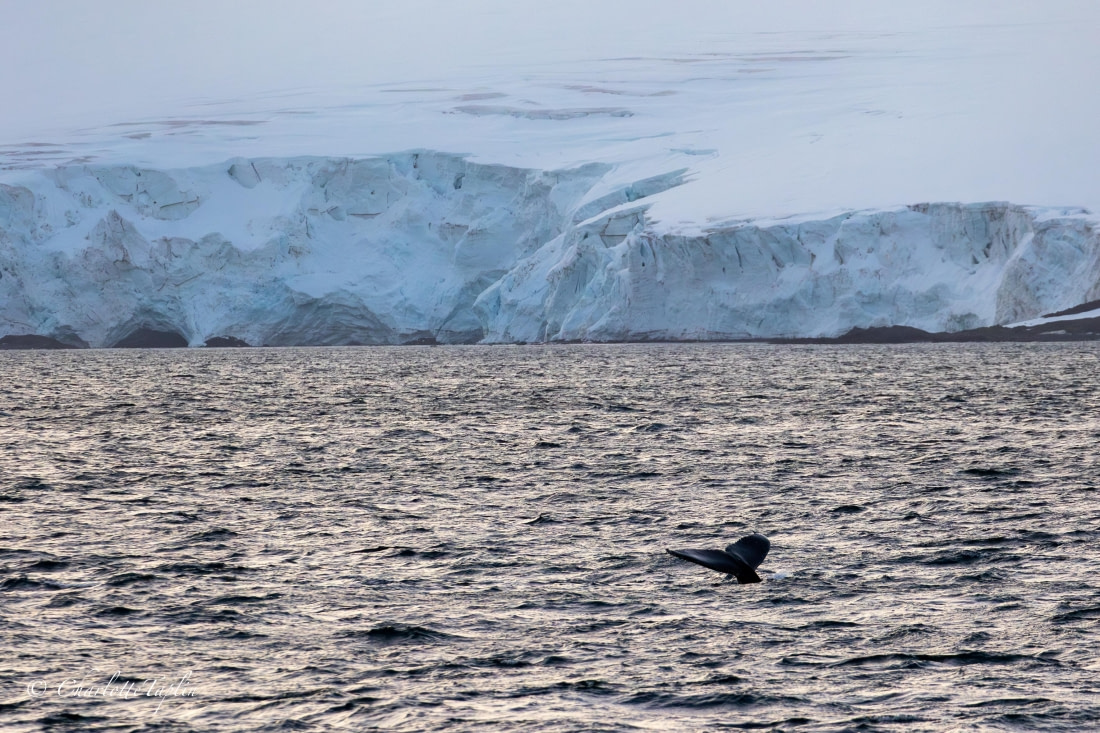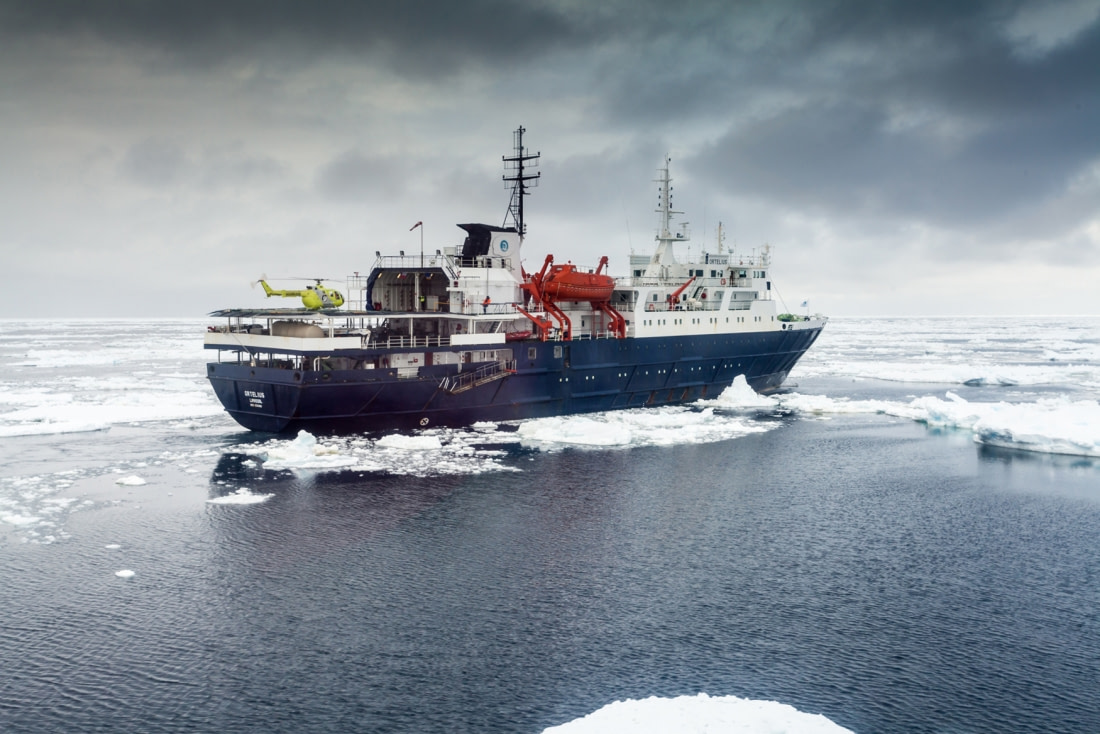| Datum: |
11.01.2024 |
| Position: |
65°10.3’S / 64°07.2’W |
| Wind: |
SW4 |
| Wetter: |
P. Cloud |
| Lufttemperatur: |
+2 |
Our day started with a friendly wake-up call from our Expedition Leader, Marcel. After a strong breakfast, we were ready for action. From 9 a.m. on we started embarkation with our Zodiacs and made our way to Peterman Island, a 1km-long Island with an icecap which rises to 150 m (about 492.13 ft) above sea level. The main attraction, along with a Gentoo colony, was a rookery of Adelie penguins and Blue-eyed shags. They all had chicks at that time, of different ages and sizes. Furthermore, an almost purely white Giant Petrel showed up. We spent several hours there, and it became quite chilly in the end.
There was just a short break after lunch. From 14.00 we went into the Zodiaks to start a Zodiac cruise around Pléneau Island. We started our tour by visiting a leopard seal resting on an ice flow, which Captain Per had spotted from the bridge. After that, we drove with our Zodiacs around the Island through tiny little channels which were very shallow. Our Zodiac drivers navigated the Zodiacs very well through the shallow and narrow channels between Pléneau and the neighbouring Island. Suddenly we found ourselves in a little bay partly covered with fast ice, and on and around that ice there were Weddell seals scattered all over the place.
They were sleeping and resting on the ice, a perfect spot for them to rest, safe from predators like orcas as they would not be able to enter the shallow bay. After watching them intensively, we made our way further around the Island and ended up in a huge iceberg graveyard. What a fantastic spot! Icebergs in various shapes and sizes had been pushed in here by the wind and currents and now gathered here in what felt like an ice sculpture park. Some appeared blue, but most of them were white, and the passengers and guides enjoyed looking at the patterns and shapes that had been created.
After three hours outside in the cold wind, we returned to Ortelius. Marcel told us about our plans for the next day, Charlotte talked about penguin adaptations, Galina about skuas, and Fritz introduced the Adelie penguin and the Snowy Sheathbill. All these bird species we had seen in the morning.
We were having a nice and cozy time in the bar, when suddenly we got the message from the bridge that five Orcas had been spotted in the distance. Two of them were males, recognizable by the long dorsal fin. The group of orcas were close to a humpback whale. The humpback breached, that means it jumped out of the water, showing us almost the whole body and falling back with a big splash. The Humpback did this very often and made us think that the whale had probably the intention to keep the orcas away from it by making loud noises and showing its strength.
Many of the passengers watched the orcas from the bridge, while some brave souls watched from the bow in biting cold wind. The people outside were rewarded for their resilience as one of the orcas came right over to Ortelius and swam under the bow. After this fantastic encounter, we were in very high spirits and were ready for the Open MIC night to start in the helicopter hangar of Ortelius.
At the very beginning and end, the expedition team sang a sailor's sea shanty. In between, there were 14 presentations performed by the crew and passengers, ranging from artistic shows to dancing, guitar playing, and singing performances. There was a wonderful atmosphere and we had so much fun. Our guests were thrilled to bits. Thanks to Paolo for organizing this great show! At around midnight, the show was over, and we went to bed with a big smile on our faces.

